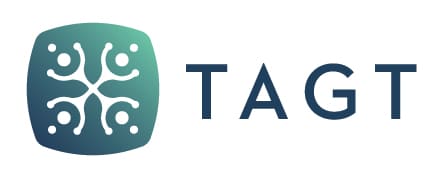Possessing a deep understanding of the definition of gifted and talented is the starting point for all that follows in the field of gifted education. When communicating with administrators, teachers, parents, community members, and the students themselves, it is crucial to emphasize that being identified as gifted and talented is not a badge of honor, not a reason for bragging, nor a reward for good behavior. It is an educational diagnosis. And once diagnosed, the definition is essential in designing the services that permit gifted and talented students to be appropriately challenged, to receive a year’s worth of learning for a year’s worth of schooling.
Texas clearly defines gifted and talented, and that language must be recognized and utilized. However, there is not universal agreement on a definition of gifted and talented. It is valuable to investigate other well-recognized characterizations, as they include aspects of giftedness not incorporated into the state’s definition. Developing this broader perspective can help ensure that a wider range of gifted and talented students are properly identified and served.
Texas’ Definition of Gifted and Talented
When the 74th Texas Legislature passed the Texas Education Code in 1995, Section §29.122 of this law, entitled “Establishment,” required that “each school district shall adopt a process for identifying and serving gifted and talented students in the district and shall establish a program for those students in each grade level.” But it is worth noting that before instructing districts to do so, they made clear who the intended audience was. The first section of this law, §29.121, entitled “Definition,” stated:
In this subchapter, “gifted and talented students” means a child or youth who performs at or shows the potential for performing at a remarkably high level of accomplishment when compared to others of the same age, experience, or environment and who:
(1) exhibits high performance capability in an intellectual, creative, or artistic area;
(2) possesses an unusual capacity for leadership; or
(3) excels in a specific academic field.
This definition has remained unchanged for more than 20 years. Now codified in The Texas State Plan for the Education of Gifted/Talented Students (Texas Education Agency, 2009), it is the basis for identification and services that must be provided for gifted and talented students in Texas.
Other Definitions of Gifted and Talented
The Federal Government, in the No Child Left Behind Act (2001), passed by the United States Congress, noted,
The term “gifted and talented,” when used with respect to students, children, or youth, means students, children, or youth who give evidence of high achievement capability in areas such as intellectual, creative, artistic, or leadership capacity, or in specific academic fields, and who need services or activities not ordinarily provided by the school in order to fully develop those capabilities.
Dr. Joseph Renzulli (1978) argued that no single criterion can be used to determine giftedness, but rather that persons who have achieved recognition because of their unique accomplishments and creative contributions possess three interlocking clusters of traits. They are above-average ability, task commitment, and creativity.
The National Association for Gifted Children (2010) updated its definition of giftedness. It stated:
Gifted individuals are those who demonstrate outstanding levels of aptitude (an exceptional ability to reason and learn) or competence (documented performance or achievement in top 10% or rarer) in one or more domains. Domains include any structured area of activity with its own symbol system (e.g., mathematics, music, language) and/or set of sensorimotor skills (e.g., painting, dance, sports).
This definition has some similarities to work of Dr. Françoys Gagné (1985). He wrote of the distinction between giftedness (untrained and spontaneously expressed natural abilities) and talent (superior mastery of systematically developed abilities). In both cases, achievement is within the upper 10% of age peers and covers one or more of five areas: intellectual, creative, socioaffective, sensorimotor, and “other.”
The Columbus Group (1991) defined giftedness from a developmental perspective. They wrote,
Giftedness is asynchronous development, in which advanced cognitive abilities and heightened intensity combine to create inner experiences and awareness that are qualitatively different from the norm. This asynchrony increases with higher intellectual capacity. The uniqueness of the gifted renders them particularly vulnerable and requires modifications in parenting, teaching, and counseling in order for them to develop optimally. (Neville, Piechowski, & Tolan, 2013)
This group’s definition is inspired, in part, by the work of Annemarie Roeper (1982), who wrote, “Giftedness is a greater awareness, a greater sensitivity, and a greater ability to understand and transform perceptions into intellectual and emotional experiences” (p. 21).
Why Does It Matter? An Ongoing Challenge
From a procedural point of view, the definition of gifted and talented is not up for debate. The definition contained in The Texas State Plan for the Education of Gifted/Talented Students (Texas Education Agency, 2009) is state law and provides direction from which to develop a model of identification and provisions to create the necessary services. However, this certainty does not come without potential challenges.
One challenge is local control. School districts have great latitude in regards to gifted education policy, more than most any other area in public education. The Texas State Plan for the Education of Gifted/Talented Students (Texas Education Agency, 2009) is not prescriptive; it does not tell a school district what tests to use or what scores are required to be identified as gifted. It only gives broad parameters on the minimum number and types of measures required, and requires the local board of trustees to approve written policies regarding student assessment and identification.
This local control may be seen as a blessing and as a curse. It allows for local input and the development of a model of identification and services that are believed to be best suited for the community. But with more than 1,000 public school districts in the state, it also means that there are wide variances in identification procedures and service models from district to district. So what happens to identified gifted students when their families relocate? Most commonly, transfer policies require that previously identified gifted students be renominated and retested. This means that a student identified as gifted in one school district may not be identified as gifted in another. This is a source of frustration and confusion for students and parents, and may have an impact on how all parties involved view the field of gifted education.
Perhaps the greatest challenge in the field of gifted education has been to identify students from racially, ethnically, and socioeconomically diverse backgrounds in numbers that are comparable to the demographics of the local community. This issue has been a topic of concern and discussion well before the state mandate for gifted education was passed in 1987. Although progress has been made over the years, in many school districts, there are still some groups of students who are underrepresented in gifted programs.
This situation highlights the value of being familiar with the additional definitions of gifted and talented. Because students from differing backgrounds may demonstrate their giftedness in differing manners, understanding the broader picture of what constitutes giftedness and how it may manifest itself creates opportunity. This knowledge can empower local leaders to create multiple pathways for securing nominations. It can allow for the selection of instruments that more accurately identifies gifted and talented students from diverse populations. It can lead to the development of innovative methods to retest students in the case of an appeal by the family.
This knowledge may also guide professional development—not just for program coordinators and gifted specialists, but for classroom teachers who may provide some portion of a district’s services for gifted students, and for administrators and counselors who have authority for service decisions for gifted and talented students.
When giftedness is properly seen as an educational diagnosis, the decisions that follow have an ongoing impact on students, families, educators, and the entire school community. Developing a clear and deep understanding of the definition of gifted and talented is a most important first step in this process.
References
Gagné, F. (1985). Giftedness and talent: Reexamining a reexamination of the definitions. Gifted Child Quarterly, 29, 103–112.
National Association for Gifted Children. (2010). Redefining giftedness for a new century: Shifting the paradigm. Retrieved from https://www.nagc.org/sites/default/files/Position%20Statement/Redefining%20Giftedness%20for%20a%20New%20Century.pdf
Neville, C., Piechowski, M., & Tolan, S. (Eds.). (2013). Off the charts. Unionville, NY: Royal Fireworks Press.
Gifted 101: What Is Giftedness? Defining Gifted and Talented PDF






